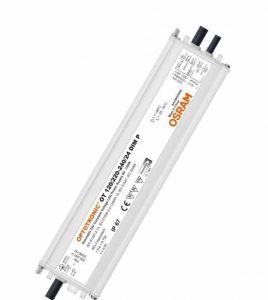 LED drive power is a power converter that converts the power supply into a specific voltage and current to drive LED light. Generally, the input of LED drive power includes high-voltage power frequency AC (that is, mains), low-voltage DC, high-voltage DC, low-voltage Frequency AC (such as the output of an electronic transformer). The output of LED driving power is mostly a constant current source that can change the voltage with the change of the LED forward voltage drop.
LED drive power is a power converter that converts the power supply into a specific voltage and current to drive LED light. Generally, the input of LED drive power includes high-voltage power frequency AC (that is, mains), low-voltage DC, high-voltage DC, low-voltage Frequency AC (such as the output of an electronic transformer). The output of LED driving power is mostly a constant current source that can change the voltage with the change of the LED forward voltage drop.
In the current life, in order to save energy and power, LED have been greatly promoted, but LED need to be powered by a power supply. The quality of LED will directly affect the life of the LED. Top priority. The quality of the LED driving power will directly affect the life of the LED, so how to make a good LED driving power is the top priority for LED power designers.
Classification of LED drive power
Constant current drive: The output current of the constant current drive circuit is constant, but the output DC voltage changes within a certain range with the size of the load resistance. The smaller the load resistance, the lower the output voltage and the larger the load resistance. , The higher the output voltage; the constant current circuit is not afraid of the load short circuit, but it is strictly prohibited that the load is completely open. But the price is relatively high. Should pay attention to the maximum withstand current and voltage value, which limits the number of LED used;
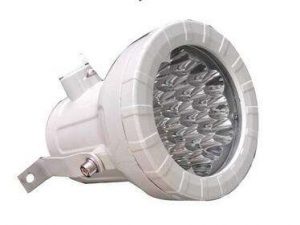 LED constant voltage drive: After the parameters of the voltage stabilization circuit are determined, the output voltage is fixed, but the output current changes with the increase and decrease of the load; the voltage stabilization circuit is not afraid of the open circuit of the load, but it is strictly forbidden to completely short . The LED are driven by a voltage-stabilized driving circuit. Each string needs to be added with a suitable resistor to make each string of LED display the average brightness; d. The brightness will be affected by the voltage change from the rectification.
LED constant voltage drive: After the parameters of the voltage stabilization circuit are determined, the output voltage is fixed, but the output current changes with the increase and decrease of the load; the voltage stabilization circuit is not afraid of the open circuit of the load, but it is strictly forbidden to completely short . The LED are driven by a voltage-stabilized driving circuit. Each string needs to be added with a suitable resistor to make each string of LED display the average brightness; d. The brightness will be affected by the voltage change from the rectification.
Pulse drive: Many LED applications require dimming capabilities, such as LED backlighting or architectural lighting dimming. Dimming can be achieved by adjusting the brightness and contrast of the LED. Simply reducing the current of the device may be able to adjust the LED light emission, but letting the LED work under the rated current will cause many adverse consequences, such as color difference problems. An alternative to simple current regulation is to integrate a pulse width modulation (PWM) controller in the LED driver. The PWM signal is not directly used to control the LED, but instead controls a switch, such as a MOSFET, to provide the required current to the LED. PWM controllers usually work at a fixed frequency and adjust the pulse width to match the required duty cycle. At present, most LED chips use PWM to control LED lighting. In order to ensure that people do not feel obvious flicker, the frequency of the PWM pulse must be greater than 100HZ. The main advantage of PWM control is that the dimming current through PWM is more accurate, which minimizes the color difference when LED emit light.
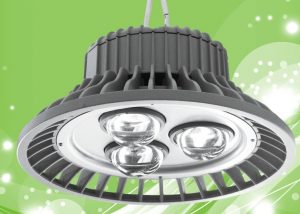 AC drive: AC drive can also be divided into three types: step-down type, step-up type and converter according to different applications. The difference between an AC driver and a DC driver is that apart from the need to rectify and filter the input AC channel, there are still problems of isolation and non-isolation from a safety perspective. AC input drivers are mainly used for retrofit lamps: For ten PAR (Parabolic Aluminum Reflector, a common luminaire on professional stage) lamps, standard bulbs, etc., they are AC at 100V, 120V or 230V It operates under input; for MR16 lamp, it needs to work under 12V AC input. Due to some complex issues, such as the dimming capability of standard triacs or leading-edge trailing-edge dimmers, and compatibility with electronic transformers (generating 12V AC from MR16 lamp operation from AC line voltage) (Ie, flicker-free operation), compared to DC input drivers, AC input drivers involve more complex fields. [1] AC power supply (mains drive) is applied to LED drive. Generally, it needs to go through steps such as step-down, rectification, filtering, voltage stabilization (or steady current), etc. to convert AC power to DC power, and then through a suitable drive circuit LED provides suitable working current, but also has high conversion efficiency, smaller size and lower cost, while solving the problem of safety isolation. Considering the impact on the power grid, the problems of electromagnetic interference and power factor must be solved. For small and medium power LED, the best circuit structure is an isolated single-ended flyback converter circuit; for high power applications, a bridge converter circuit should be used.
AC drive: AC drive can also be divided into three types: step-down type, step-up type and converter according to different applications. The difference between an AC driver and a DC driver is that apart from the need to rectify and filter the input AC channel, there are still problems of isolation and non-isolation from a safety perspective. AC input drivers are mainly used for retrofit lamps: For ten PAR (Parabolic Aluminum Reflector, a common luminaire on professional stage) lamps, standard bulbs, etc., they are AC at 100V, 120V or 230V It operates under input; for MR16 lamp, it needs to work under 12V AC input. Due to some complex issues, such as the dimming capability of standard triacs or leading-edge trailing-edge dimmers, and compatibility with electronic transformers (generating 12V AC from MR16 lamp operation from AC line voltage) (Ie, flicker-free operation), compared to DC input drivers, AC input drivers involve more complex fields. [1] AC power supply (mains drive) is applied to LED drive. Generally, it needs to go through steps such as step-down, rectification, filtering, voltage stabilization (or steady current), etc. to convert AC power to DC power, and then through a suitable drive circuit LED provides suitable working current, but also has high conversion efficiency, smaller size and lower cost, while solving the problem of safety isolation. Considering the impact on the power grid, the problems of electromagnetic interference and power factor must be solved. For small and medium power LED, the best circuit structure is an isolated single-ended flyback converter circuit; for high power applications, a bridge converter circuit should be used.
Characteristics and requirements of LED drive power
1.High reliability Especially like the driving power of LED street light, installed at high altitude, there is a waterproof aluminum casing driving power. If the quality is good, it is not easy to break, reducing the number of maintenance.
 2.High-efficiency LED are energy-saving products, and the efficiency of the drive power must be high. For the power supply installation, the structure of the LED driver in the luminaire is particularly important. Because the luminous efficiency of the LED decreases with the increase of the LED temperature, the heat dissipation of the LED is very important. The efficiency of the power supply is high, its power consumption is small, the heat generation in the lamp is small, and the temperature rise of the lamp is reduced. It is beneficial to delay the light decay of LED.
2.High-efficiency LED are energy-saving products, and the efficiency of the drive power must be high. For the power supply installation, the structure of the LED driver in the luminaire is particularly important. Because the luminous efficiency of the LED decreases with the increase of the LED temperature, the heat dissipation of the LED is very important. The efficiency of the power supply is high, its power consumption is small, the heat generation in the lamp is small, and the temperature rise of the lamp is reduced. It is beneficial to delay the light decay of LED.
3.High power factor Power factor is the load requirement of the grid. Generally, there are no mandatory indicators for electrical appliances below 70 watts. Although the lower power factor of a single power consumer has a smaller impact on the power grid, everyone lights up at night, and similar loads are too concentrated, which will cause more serious pollution to the power grid. For 30W to 40W LED drive power, it is said that in the near future, there may be certain index requirements for the power factor.
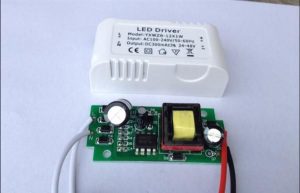 4. There are two driving methods: one is a constant voltage source for multiple constant current sources, and each constant current source supplies power to each LED individually. In this way, the combination is flexible, and LED failures along the way will not affect the work of other LED, but the cost will be slightly higher. The other is direct constant current power supply, LED run in series or parallel. Its advantage is a little lower cost, but its flexibility is poor. It also needs to solve the problem of one LED failure, which will affect the operation of other LED. These two forms coexist for a period of time. Multi-channel constant current output power supply mode will be better in terms of cost and performance. Maybe the mainstream direction in the future.
4. There are two driving methods: one is a constant voltage source for multiple constant current sources, and each constant current source supplies power to each LED individually. In this way, the combination is flexible, and LED failures along the way will not affect the work of other LED, but the cost will be slightly higher. The other is direct constant current power supply, LED run in series or parallel. Its advantage is a little lower cost, but its flexibility is poor. It also needs to solve the problem of one LED failure, which will affect the operation of other LED. These two forms coexist for a period of time. Multi-channel constant current output power supply mode will be better in terms of cost and performance. Maybe the mainstream direction in the future.
5.Surge protection LED’s ability to resist surge is relatively poor, especially its ability to resist reverse voltage. It is also important to strengthen this protection. Some LED lights are installed outdoors, such as LED street lights. Due to the induction of the grid load and the induction of lightning strikes, various surges will be invaded from the grid system, and some surges will cause damage to the LED. Therefore, the LED driving power supply must have the ability to suppress the intrusion of the surge and protect the LED from damage.
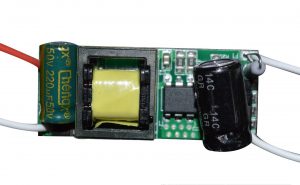 6.Protection function In addition to the conventional protection function, it is best to add negative feedback of LED temperature to the constant current output to prevent the LED temperature from becoming too high.
6.Protection function In addition to the conventional protection function, it is best to add negative feedback of LED temperature to the constant current output to prevent the LED temperature from becoming too high.
7.In terms of protection, the lamp should be installed outside, the power supply structure should be waterproof and moisture-proof, and the shell should be resistant to sunlight.
8.The life of the driving power supply must match the life of the LED.
9.To meet the requirements of safety regulations and electromagnetic compatibility. With the increasing application of LED, the performance of LED driving power will be more and more suitable for LED requirements.
Development status of LED drive power
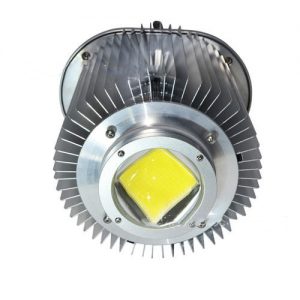 At the same time that LED shines, LED drive power is the top priority in the development of the LED industry chain. The life and reliability of LED drive power directly affect the long life of LED light sources. Therefore, while the LED industry chain continues to integrate and develop, the maturity of LED drive power technology plays a decisive factor. Due to the rapid development of the LED industry, it has gradually shifted from the lighting direction of government agencies to civilian lighting. Thanks to a series of policies recently issued by the country to encourage the development of the LED industry, it has also brought many problems. The problem was exposed. The LED driving power market is closely related to the development of downstream industries, especially high-power LED street lamps. However, with the continuous improvement of various performance parameters of LED, the LED lighting market has gradually emerged and its application fields have become more extensive, especially in 2012. From outdoor to indoor commercial lighting applications, domestic and foreign markets and customers have higher requirements for LED drive power, especially power efficiency, power factor, life, constant current accuracy, electromagnetic compatibility and other performance. As the application of LED will gradually change from government-led to civil lighting, the application of LED will gradually be subdivided. Although the claim that the life of a single LED is as long as 100,000 hours has exploded, the LED drive power has indeed not kept up with the actual life of the LED. The impact on the promotion of LED lighting products is because the life of the LED driving power itself directly drags the life of the LED lighting fixtures; or the efficiency of the driving power is not high resulting in a low efficiency conversion of the LED lighting fixtures; or the instability of the output current and voltage affects the light emission Quality has greatly reduced the green energy saving advantages of LED lighting, which has affected the popularity of the market. In order to overcome the problems of heat dissipation and life of the LED driving power, the electrolytic capacitor LED driving solution will become the final choice of the market. In the future, LED drive power will develop towards stable, safe, high efficiency, no electrolytic capacitors, and highly integrated and small volume.
At the same time that LED shines, LED drive power is the top priority in the development of the LED industry chain. The life and reliability of LED drive power directly affect the long life of LED light sources. Therefore, while the LED industry chain continues to integrate and develop, the maturity of LED drive power technology plays a decisive factor. Due to the rapid development of the LED industry, it has gradually shifted from the lighting direction of government agencies to civilian lighting. Thanks to a series of policies recently issued by the country to encourage the development of the LED industry, it has also brought many problems. The problem was exposed. The LED driving power market is closely related to the development of downstream industries, especially high-power LED street lamps. However, with the continuous improvement of various performance parameters of LED, the LED lighting market has gradually emerged and its application fields have become more extensive, especially in 2012. From outdoor to indoor commercial lighting applications, domestic and foreign markets and customers have higher requirements for LED drive power, especially power efficiency, power factor, life, constant current accuracy, electromagnetic compatibility and other performance. As the application of LED will gradually change from government-led to civil lighting, the application of LED will gradually be subdivided. Although the claim that the life of a single LED is as long as 100,000 hours has exploded, the LED drive power has indeed not kept up with the actual life of the LED. The impact on the promotion of LED lighting products is because the life of the LED driving power itself directly drags the life of the LED lighting fixtures; or the efficiency of the driving power is not high resulting in a low efficiency conversion of the LED lighting fixtures; or the instability of the output current and voltage affects the light emission Quality has greatly reduced the green energy saving advantages of LED lighting, which has affected the popularity of the market. In order to overcome the problems of heat dissipation and life of the LED driving power, the electrolytic capacitor LED driving solution will become the final choice of the market. In the future, LED drive power will develop towards stable, safe, high efficiency, no electrolytic capacitors, and highly integrated and small volume.
Development trend of LED drive power
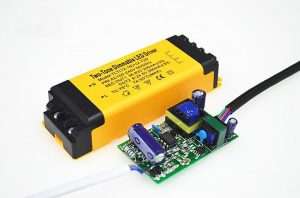 According to the characteristics of LED, a series of constant voltage and constant current control electronic circuits are developed. The integrated circuit technology is used to control the input current of each LED at the optimal current value, so that the LED can obtain a stable current and produce the highest output luminous flux. LED driving power is best to control the size of the LED current when the input voltage and ambient temperature and other factors change. The LED driving power supply has intelligent control function, so that the load current of the LED can be controlled at a pre-designed level under the influence of various factors. When the load current changes due to various factors, the primary control IC can return the load current to the original design value by controlling the switch. In terms of control circuit design, we must develop in three areas: centralized control, standard modularization, and system scalability. Under the circumstances that the LED light efficiency and luminous flux are limited, the characteristics of LED color diversity are fully utilized to develop a control circuit for color-changing LED lighting. The development direction of LED driving power LED has many advantages, such as environmental protection, energy saving, small size, long life, etc., which will make LED gradually replace traditional fluorescent lamps and incandescent lamps in the future general lighting. The performance of the driving power is the key to ensure the overall performance of the LED, so it must be ensured that the LED driving power has the advantages of compactness, long life, high reliability and so on.
According to the characteristics of LED, a series of constant voltage and constant current control electronic circuits are developed. The integrated circuit technology is used to control the input current of each LED at the optimal current value, so that the LED can obtain a stable current and produce the highest output luminous flux. LED driving power is best to control the size of the LED current when the input voltage and ambient temperature and other factors change. The LED driving power supply has intelligent control function, so that the load current of the LED can be controlled at a pre-designed level under the influence of various factors. When the load current changes due to various factors, the primary control IC can return the load current to the original design value by controlling the switch. In terms of control circuit design, we must develop in three areas: centralized control, standard modularization, and system scalability. Under the circumstances that the LED light efficiency and luminous flux are limited, the characteristics of LED color diversity are fully utilized to develop a control circuit for color-changing LED lighting. The development direction of LED driving power LED has many advantages, such as environmental protection, energy saving, small size, long life, etc., which will make LED gradually replace traditional fluorescent lamps and incandescent lamps in the future general lighting. The performance of the driving power is the key to ensure the overall performance of the LED, so it must be ensured that the LED driving power has the advantages of compactness, long life, high reliability and so on.
Research direction
1.To improve the life of the driving power, one of the important advantages of LED is its long life, which is about 30,000 to 100,000 hours. The traditional LED driving power supply contains electrolytic capacitors, and the life of electrolytic capacitors is relatively short, about 5,000 hours. This is the main reason that restricts the life of LED driving power supplies. Therefore, electrolytic capacitors should not be used in LED driving power supplies.
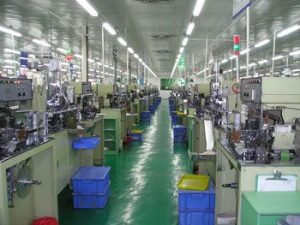
2.Increase the input power factor of the drive power supply and reduce the total harmonic distortion. The “ENERGYSTAR” solid-state lighting document issued by the US Department of Energy states that any power level requires mandatory power factor correction. This standard applies to a range of products, such as table lamps, cabinet lighting and so on. Among them, the power factor of the LED driving power supply for family residential lighting must be greater than 0.7, and it must be greater than 0.9 in commercial lighting. The IEC61000-3-2 harmonic content standard stipulates that the total harmonic distortion (Total Harmonic Distortion, THD) should be less than 35% and the power factor should not be less than 0.7 in lighting with a power level greater than 25W. The promulgation of these standards put forward higher requirements for the design of driving power for LED lighting.
3.Reduce the size of the driving power supply LED itself is relatively small, which is very advantageous for portable products. The driving power of the LED should also be as small as possible so that it can be smoothly installed in the LED lamp holder. In the design process, the volume of the driving power supply should be minimized.
4.Improving the reliability of the driving power supply During the operation of the LED, non-human factors such as high temperature and aging of the device will cause fatal damage to the LED body. Therefore, protection circuits such as over-voltage protection and over-current protection should be added to the LED driving power supply to deal with accidents and ensure the safe operation of the LED body.


